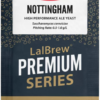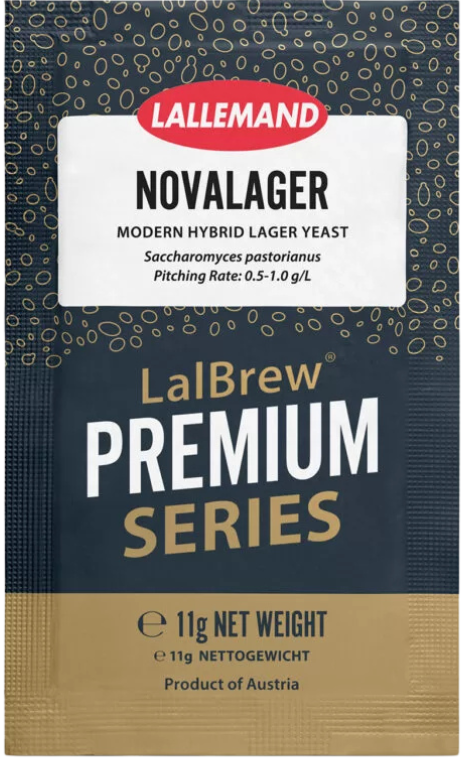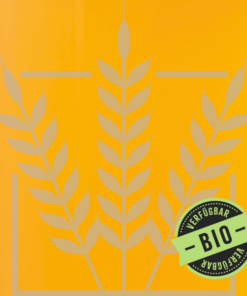Lallemand NovaLager Yeast 11g
72,00 kr
Stor nyhet fra Lallemand!
Lalbrew NovaLager er en ny hybrid tørrgjær som er utviklet spesielt for å få et rent lager-preg selv på kort tid, og er designet for å tåle temperatur opptil 20°C!
Flokkulering: Medium
Attenuering: Høy (78-84%)
Alk. toleranse: 13%
Optimal temperatur: 10-20°C
På lager
Flere kan skaffes
Skaffetid: 14 Dager
LalBrew NovaLager™ is a true bottom-fermenting Saccharomyces pastorianus hybrid from the novel Group III lineage that has been selected to produce clean lager beers with distinct flavor characteristics and superior fermentation performance. LalBrew NovaLager™ is a robust lager strain with ideal characteristics for lager beer production including fast fermentations, high attenuation. The distinct flavor profile is very clean, slight esters over a wide temperature range. This product is the result of the research and development work of Renaissance Bioscience Corp. (Vancouver BC, Canada) in partnership with Lallemand Brewing. LalBrew NovaLager™ was selected using classical and non-GMO breeding methods to obtain a novel Saccharomyces cerevisiae x Saccharomyces eubayanus hybrid strain that defines a novel Group III (Renaissance) lager lineage that is distinct from any other traditional Saccharomyces pastorianus strains. This strain is a low VDK/diacetyl producer and utilizes patented technology from the University of California Davis (USA) that inhibits the production of hydrogen sulfide (H2S) off-flavors, therefore reducing the maturation time associated with lager beer production.
Classified as Saccharomyces pastorianus, a bottom-fermenting yeast. Typical Analysis of LalBrew NovaLager™ yeast:
Percent solids 93% – 97%
Viability = 5 x 109 CFU per gram of dry yeast
Wild Yeast < 1 per 106 yeast cells
Diastaticus Negative
Bacteria < 1 per 106 yeast cells
Finished product is released to the market only after passing a rigorous series of tests
*See specifications sheet for details
In Lallemand’s Standard Conditions Wort at 12°C (53.6°F) LalBrew NovaLager™ yeast exhibits: Vigorous fermentation that can be completed in 6 days.
High Attenuation and Medium Flocculation.
Aroma and flavor are clean with low to medium ester, no sulfur. This strain is POF negative.
The optimal temperature range for LalBrew NovaLager™ yeast when producing traditional styles is 10 – 20°C (50 – 68°F).
Lag phase, total fermentation time, attenuation and flavor are dependent on pitch rate, yeast handling, fermentation temperature and nutritional quality of the wort.
Relaterte produkter
Chit
Pilsen Malt
Biscuit
Black malt
Black malt
Hvete
BEST Heidelberg Wheat Malt 1 kg












